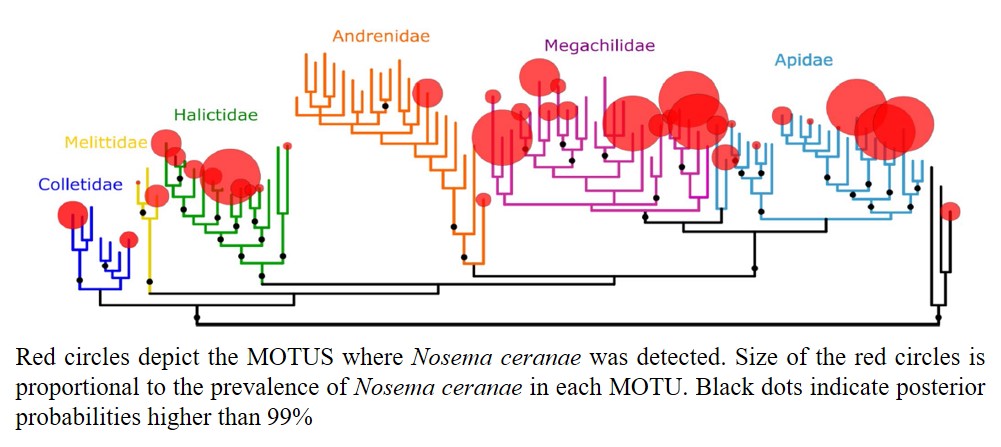Martínez-López V, Ruiz C, Muñoz I, Ornosa C, Higes M, Martín-Hernández R & De la Rúa P
Detection of Microsporidia in Pollinator Communities of a Mediterranean Biodiversity Hotspot for Wild Bees
Microbial Ecology (2021)
DOI: 10.1007/s00248-021-01854-0
RESUMEN
Insect pollination is crucial for the maintenance of natural and managed ecosystems but the functioning of this ecosystem service is threatened by a worldwide decline of pollinators. Key factors in this situation include the spread and interspecific transmission of pathogens worldwide through the movement of managed pollinators. Research on this field has been mainly conducted in some particular species, while studies assessing the interspecific transmission of pathogens at a community level are scarce. However, this information is pivotal to design strategies to protect pollinators. Herein, we analysed the prevalence of two common microsporidia pathogens of managed honey bees (Nosema ceranae and Nosema apis) in bee communities of semiarid Mediterranean areas from the Southeast of the Iberian Peninsula. Our results confirm the ability of Nosema ceranae to disperse across wild bee communities in semiarid Mediterranean ecosystems since it was detected in 36 Apoidea species (39% of the sampling; for the first time in nine genera). The prevalence of the pathogen did not show any hylogenetic signal which suggests a superfamily host range of the pathogen or that wild bees may be acting only as vectors of Nosema ceranae. In addition, Nosema apis was detected in an Eucera species, which is the second time it has been detected by molecular techniques in a host other than the honey bee. Our study represents the primary assessment of the prevalence of microsporidia at community level in Mediterranean areas and provides outstanding results on the ability of Nosema pathogens to spread across the landscape.
